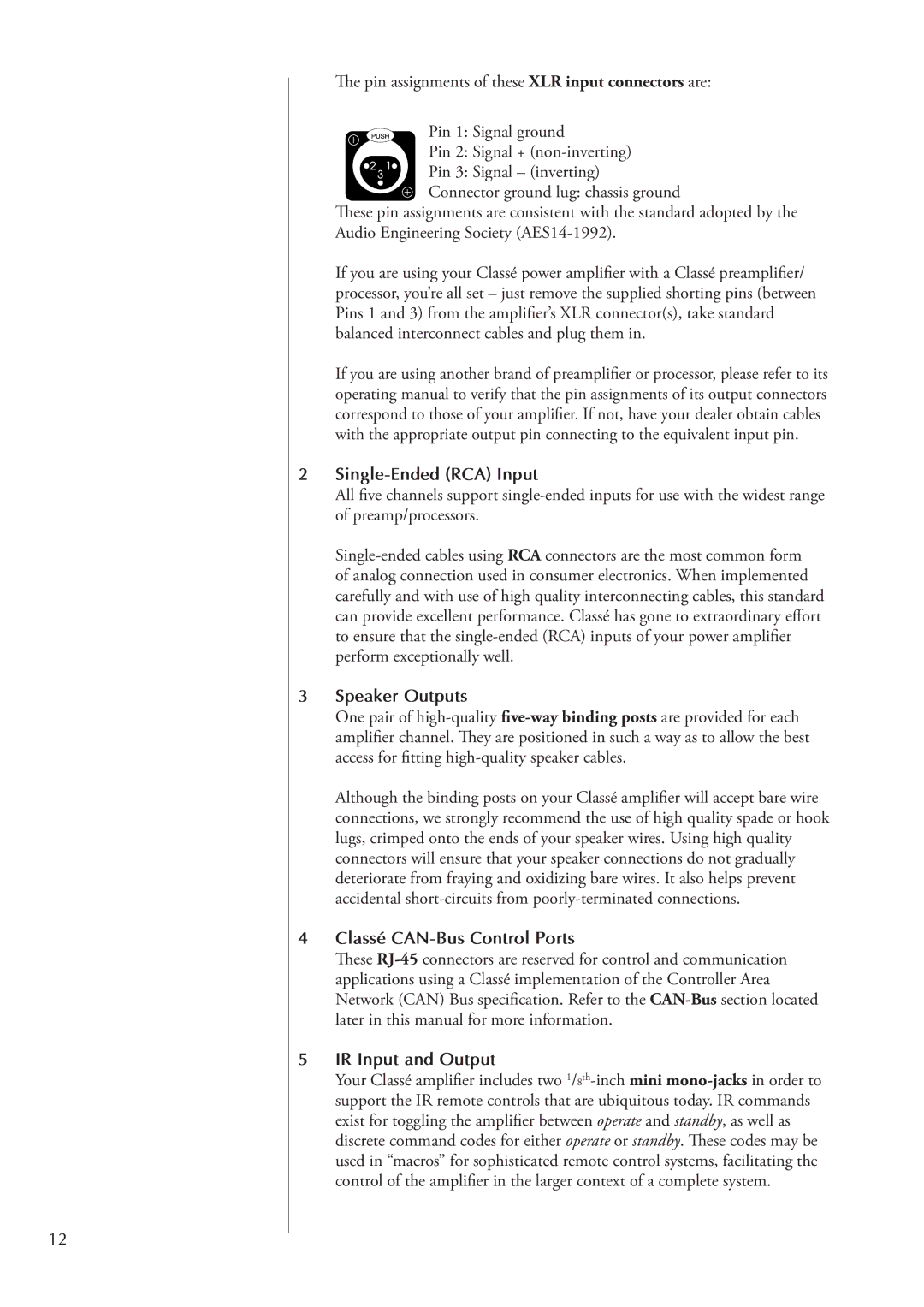
12
The pin assignments of these XLR input connectors are:
Pin 1: Signal ground
Pin 2: Signal +
Connector ground lug: chassis ground
These pin assignments are consistent with the standard adopted by the Audio Engineering Society
If you are using your Classé power amplifier with a Classé preamplifier/ processor, you’re all set – just remove the supplied shorting pins (between Pins 1 and 3) from the amplifier’s XLR connector(s), take standard balanced interconnect cables and plug them in.
If you are using another brand of preamplifier or processor, please refer to its operating manual to verify that the pin assignments of its output connectors correspond to those of your amplifier. If not, have your dealer obtain cables with the appropriate output pin connecting to the equivalent input pin.
2Single-Ended (RCA) Input
All five channels support
3Speaker Outputs
One pair of
Although the binding posts on your Classé amplifier will accept bare wire connections, we strongly recommend the use of high quality spade or hook lugs, crimped onto the ends of your speaker wires. Using high quality connectors will ensure that your speaker connections do not gradually deteriorate from fraying and oxidizing bare wires. It also helps prevent accidental
4Classé CAN-Bus Control Ports
These
Network (CAN) Bus specification. Refer to the
5IR Input and Output
Your Classé amplifier includes two
discrete command codes for either operate or standby. These codes may be used in “macros” for sophisticated remote control systems, facilitating the control of the amplifier in the larger context of a complete system.
